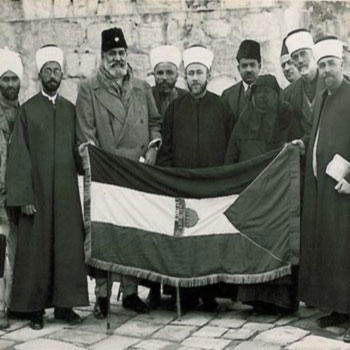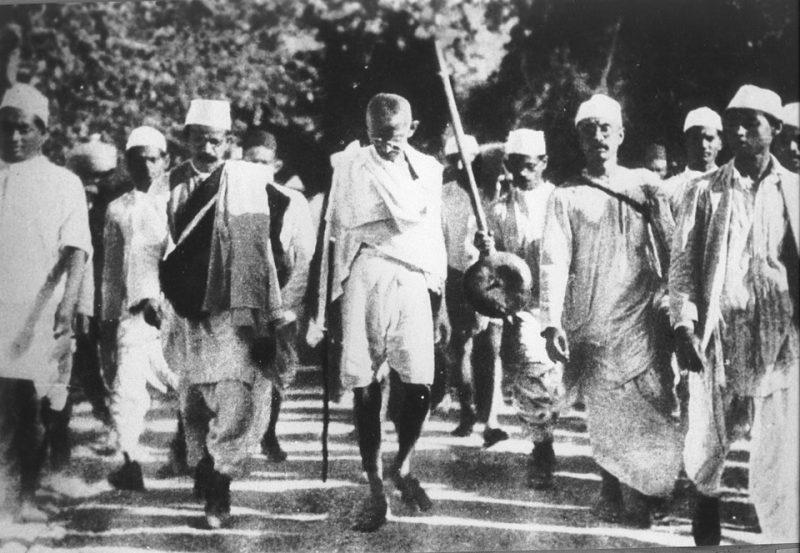Khilafat Movement
The Khilafat Movement (1919–1924), also known as the Caliphate Movement or the Indian Muslim Movement, was a pan-Islamist political protest movement started by Muslims in British India under the leadership of Shaukat Ali, Maulana Mohammad Ali Jauhar, Hakim Ajmal Khan, and Abul Kalam Azad. Its goals were to restore the Ottoman Caliphate’s caliph, advance Muslim interests, and involve Muslims in the struggle for national independence.
The notion of an independent Muslim nation in India began to take shape around this period. It was a demonstration against the restrictions imposed by the Treaty of Sèvres on the caliph and the Ottoman Empire following World War One. When Turkey advanced toward nationalism and obtained a more favourable diplomatic posture, the movement came to an end by the end of 1922. Turkey had simply done away with the caliphate by 1924.
Khilafat Movement for Class 10 Students
The majority of the important political and public protests in favour of the caliphate occurred in India, despite their emergence across the Muslim world. Maulana Muhammad Ali Johar, a well-known Muslim journalist with an education from Oxford, served four years in prison for supporting the caliphate and encouraging opposition to the colonial administration.
The All India Khilafat Committee was founded by Mohammad Ali and his brother Maulana Shaukat Ali along with other Muslim leaders including Pir Ghulam Mujaddid Sarhandi, Sheikh Shaukat Ali Siddiqui, Dr. Mukhtar Ahmed Ansari, Raees-Ul-Muhajireen Barrister Jan Muhammad Junejo, Hasrat Mohani, Syed Ata Ullah Shah Bukhari, Mohammad Farooq The organisation had its headquarters in Landlord Shaukat Ali Siddiqui’s estate, Hathe Shaukat Ali, in Lucknow, India. They sought to foster Muslim political unification and use their power to uphold the caliphate. They released the Khilafat Manifesto in 1920, which urged Indian Muslims to band together and hold the British government responsible for maintaining the caliphate.
What is Khilafat Movement Background?
In an effort to defend the Ottoman Empire from Western invasion and fragmentation and to quell domestic democratic opposition, Ottoman ruler Abdul Hamid II developed his pan-Islamist programme. In the late 19th century, he dispatched Jamaluddin Afghani as an agent to India. Muslims in India were moved to compassion and religious fervour by the plight of the Ottoman monarch. The Ottoman sultan was officially the highest religious and political figurehead of all Sunni Muslims worldwide since he was the caliph.
Muslim religious figures from all over the world started promoting the caliphate and encouraging Muslim involvement. With assistance from the Ottoman Empire, the head of the Muslim faith Maulana Mehmud Hasan attempted to plan a national war of independence.
Khilafat Movement Year and Date
Khilafat leaders and the Indian National Congress, India’s main political party and leader of the nationalist struggle, formed an alliance in 1920. Khilafat leaders and Congress leader Mahatma Gandhi vowed to cooperate and fight for the causes of Khilafat and Swaraj. The Khilafatists played a significant role in the non-cooperation movement, an organised nationwide campaign of peaceful civil disobedience, in an effort to put more pressure on the colonial administration. Amanullah Khan led some people from the North-West Frontier Province to emigrate to Afghanistan as a form of protest. Leaders of the Khilafat including Dr. Ansari, Maulana Azad, and Hakim Ajmal Khan also developed a personal bond with Gandhi. In 1920, these pioneers established the Jamia Millia Islamia to further Muslim independence in education and social rebirth.
Why was the khilafat Movement Started?
The Khilafat movement and the Non-Cooperation movement were two large-scale movements took place in 1919–1922 to protest British rule in India. Despite having diverse concerns, the movements embraced a same strategy of non-violence and non-cooperation. The Muslim League and Congress came together during this time. Both of these parties worked together to organise numerous political protests.
The Hunter Commission on the Punjab atrocities proved to be a red herring, and the House of Lords (of the British Parliament) supported General Dyer’s action after the Rowlatt Act, the declaration of martial law in Punjab, and the Jallianwalla Bagh massacre exposed the brutal and uncivilised face of foreign rule; all these were the reason for the start of such a mass movement in the British Era.
Khilafat Movement- Images

Common People Participating in the Khilafat Movement

The leaders participating in the Khilafat Movement
Khilafat Movement Effects
The campaign of non-cooperation initially succeeded. The programme began with a boycott of legislative bodies, public universities, and imported commodities. Governmental duties and the giving up of titles and honours. India had widespread strikes, protests, and acts of civil disobedience. Muslims and Hindus joined forces in the conflict, which started out amicably. The colonial authority quickly arrested Gandhi, the Ali brothers, and others. An influential role was played throughout India by a Punjab Khilafat delegation led by Moulana Manzoor Ahmed and Moulana Lutfullah Khan Dankauri under the Tehrik-e-Khilafat banner, with a focus on the Punjab (Sirsa, Lahore, Haryana etc.). The primary funders of the cause were residents of villages like Aujla Khurd.
Even though they continued their activities and held talks with the colonial authority, the Khilafat movement suffered because Muslims were split between supporting the Muslim League, the Congress, and the Khilafat movement. The Ottoman Empire was finally overthrown by Mustafa Kemal Pasha’s armies, who also established a progressive, secular republic in independent Turkey. He did not ask the Indians for assistance and he abolished the caliphate.









 Try CUET College Predictor 2025 to Predi...
Try CUET College Predictor 2025 to Predi...
 CUET Result 2025 OUT (Today) @cuet.nta.n...
CUET Result 2025 OUT (Today) @cuet.nta.n...
 Why the Delay in CUET UG 2025 Results? C...
Why the Delay in CUET UG 2025 Results? C...









